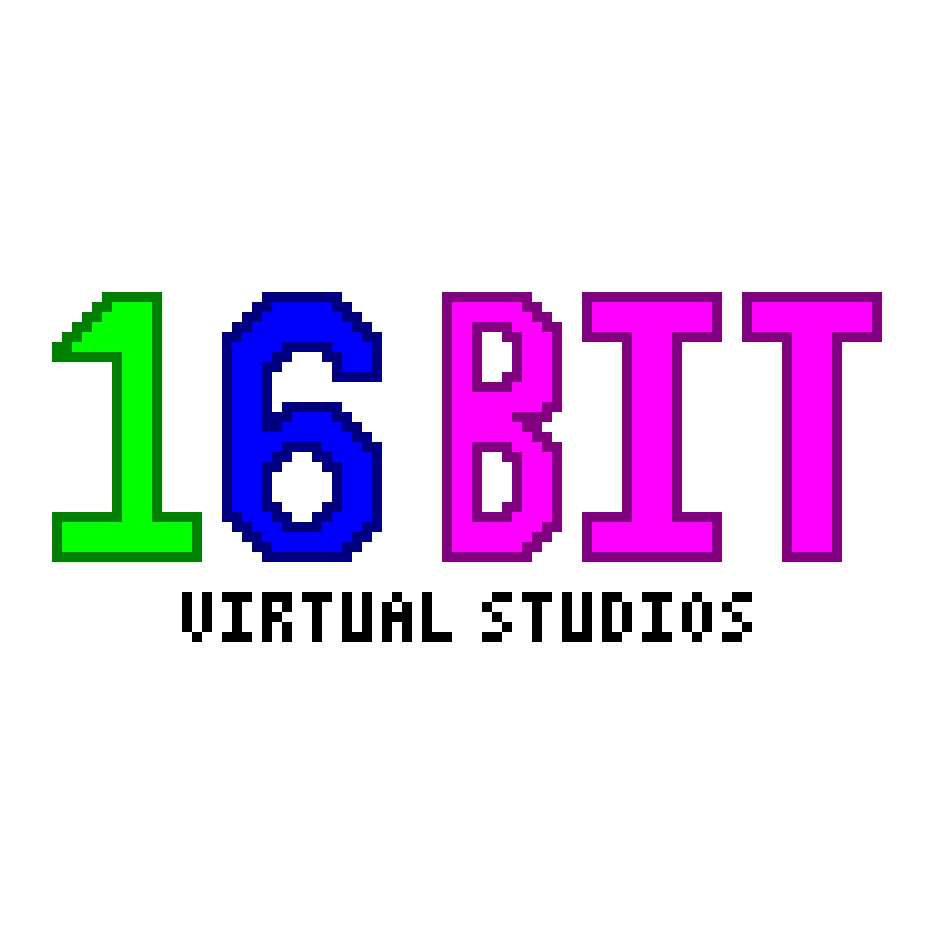Finally migrated from Windows to Linux. For anyone wondering, what is the state of Linux as your primary OS for home PC\laptop in 2023.
I’ve finalised my Archlinux installation yesterday, I dropped of Linux more than 10 years ago and experience in 2023 in comparison is awesome and beyond even wildest dreams back then:
- For average user looking for more out of the box experience I would suggest something Arch based (people in comments suggest EndeavourOS, please do your research). Archlinux installation took me quite some time
- Almost everything works out of the box, by just installing corresponding package
- KDE Plasma environment is fast and beautiful
- Pipewire audio server (Jack\Pulseaudio replacement) works great
- Wayland window server is not there yet, especially if you have Nvidia with proprietary drivers and want to use VR. Waking up, session restoration and other scenarios have issues. Use X11.
- Wine is great!
- Music making - Bitwig Studio DAW has linux native version, yabridge allow you to use windows VSTs, which are easily installed via wine
- Gaming works out of the box with Steam for majority of titles, some games have native linux version. Performance is great. In worst case windows game might loose 5-15% in performance. Was not case for my titles
- Gaming outside steam is fine too. Use Wine, Lutris, Proton
- VR is a mixed bag. Not everything is there (Desktop view, sound control and mirroring, camera, motions smooth, lighthouses do not wake up os go to sleep. I use my phone to turn them on/off). But if its not the problem for you, quite some titles work. Tried: native HF Alyx, Lab, windows: Beat Saber and Boneworks. For me it’s a surprise, I did not count on it. Performance is great.
So overall my experience is great. Eventually I’m going to get rid of WIndows on other computers and laptops at howe. I can finally wave goodbye to Windows, with lots of ads and bloatware. Alway glad to help with answers regarding installation while my memory and history logs are fresh. ^^
I wouldn’t recommend Arch to Linux beginners, though. It’ll take quite a bit of tinkering to get to work and you have to develop a pretty detailed understanding of the whole thing. Which is absolutely fine, of course, if this is what you want to do. But if you just want something that works with minimal hassle, try Mint.
Yes, I find this obsession with Arch on Lemmy very weird. It’s certainly not a distro for beginners. Ubuntu (let the hate flow), Mint, Fedora, and many others would be better choices.
If it is what you like, fair enough but I feel that it is encouraged around here as a default for both beginners and advanced users, which is bizarre. It’s too complex for beginners and not optimisable enough for very advanced users. I don’t hate it but I hate to see it become the standard.
From my personal experience Arch is several months ahead of other distros and depending on the package and sometimes has everything you need already included for gaming.
I believe this is due to the Steam Deck.
However for ease of use, I agree there are other better distros. Fedora is only 2ish months behind arch in terms of graphics drivers and Ubuntu… has the latest proton from steam and lutris since proton isn’t installed from the local app stores.
Arch is several months ahead of other distros
Source for that? It’s one of those weird, wild affirmations that go around regarding Arch. Ahead in terms of what? Integrating the most up-to-date kernel or something?
Is it because of the rolling release model? But it’s not the only one to have rolling releases.
This comes from personal testing of games. There was a DX11 bug intel igpus where UE4 games crash instantly on boot. I was able to work around this by forcing dx12 in arch, but when I moved to fedora it wasn’t working, that was until about 2 months later after an update. Since I don’t know exactly how far behind fedora is in terms of graphics drivers I said it in ambiguous terms.
Yeah, I’m not sure supporting MS proprietary 3D rendering APIs is the goal of any Linux distro? It’s like saying: look my distro is ahead because excel runs on it. I might be missing the point here. If you can have the same reasoning with Vulkan, that would make sense tho
Have you not heard of the Steam Deck and Proton? Running MS APIs through a compatibility layer is the main goal for Linux gaming for the past few years, as it allows legacy games that had no hope in getting a Linux native port (or a terrible Linux port) to run in Linux, through the Proton Compatibility layer.
The apps I was using were running with DXVK, but due to a bug with intel iGPU driver which affects both Windows and Linux users, it didn’t work. A Intel Mesa update patched the bug, and my game worked better. When I moved back I was on an older driver and had to wait for it to be added in.
Aaaaaah it’s gaming! Oh dear, I feel old. OK, so Arch gets the compiled drivers for gaming related HW before other distros? I guess, given the community of nerds (no offense), that would make sense. Thanks for clearing that up.
Still wouldn’t be ahead of the compilable distros. I urge you to switch to LFS, the real beginners distros. ;)
I find Mint to be the most obvious choice for beginners who don’t use Lemmy.
Anecdotally, Mint broke file permissions and then the mounting points for my home server setup. And I find Cinnamon to be quite ugly imho.
I tried Fedora and Debian and much prefer those two vs Mint. Also, KDE is incredibly beautiful on the Steam Deck.
P.S. Fedora and Debian work with secure boot OOTB. Helpful for a laptop install. I know you can make it work with Arch and Mint as well, and there’s issues+opinions with secure boot, but I just wanted something to work. I am not as adept with linux and the guides assumed a particular level of experience with it.
I installed Mint in my Windows user moms computer she loves it.(on windows it was unusably slow) It is a drop in replacement for beginners who want to use linux almost exactly the same way they have used windows. Fedora is good(and my fave) and not too unintuitive for beginners aswell but if someone wants to switch to linux but “keep using windows” Mint is the answer, not to mention all the extra software preinstalled to make stuff work out of the box.
You’re doing god’s work, well done
An the thing is, I don’t use linux myself 😁. Lemme explain, I tried Nobara on my gaming desktop and loved it but was not geting the performance I was hoping for so I reinstalled the nvidia drivers. I fucked up and couldn’t get to the graphical UI anymore. For some ungodly reason not even live USB without the simplified graphics mode I formatted my drive thru the simplified live usb mode to nsft and installed Windows on it. To this day Linux literally can’t be installed on my Computer. Same bug. Plus Wayland isn’t quiite ready for nvidia cards yet, meaning I will do Linux on my next PC that will also have an AMD GPU.
I used to use Arch Linux. It’s really good, honestly, especially if you want to know how the OS components work from inside or make something custom. For anything else, I would recommend Debian and its non-snap-based derivatives (Linux Mint Debian Edition or Tuxedo OS, or KDE Neon).
I had to help a friend install the VMware kernel modules, since VMware is weird and VirtualBox sucks for virtualising Windows. I had to guide him through it step by step, making sure his commands were exact.
He’s only started using the terminal properly. Hell no, I’m not going to recommend Arch to him.
It’s because it’s bleeding edge, extremely well documented and extremely popular. Bleeding edge is exciting and you’re gonna end up on the arch wiki anyway regardless of distro, so you may as well go to the source.
Do mind though it doesn’t mean it’s easy, like at all, and I fundamentally agree, there’s a million better choices for first timers.
you’re gonna end up on the arch wiki anyway regardless of distro, so you may as well go to the source.
Absolutely not. I’ve never used a distro that required me to check the forums or wiki of another distro.
it’s bleeding edge
What now? I feel I have fallen asleep and just woke up at a marketing meeting at my job.
I’ve ended up on the arch wiki a few times on non-arch distros, it covers many generic Linux tools very well
Being on NIX I’m very jealous of the volumes of documentation for Arch. Found my way to the Arch wiki a few times.
not optimisable enough for very advanced users
In what way?
Compared to gentoo for instance, packages are not compiled depending on the HW they are installed on. So, not enough resource optimisation and customisation for some users
Of course, any distro is customisable if you spend the time to do it voluntarily, but by default it’s not the way it works
I suppose, although you are getting very little performance improvements compiling from sources. Like very, very little. Considering that you will be waiting for emerge a lot, there’s a good handful of folks that consider it a net positive.
Absolutely, it used to be important, now it’s more of a hobby for me…
Yet, for some people who love to have everything under control, Arch is a step below the fully optimisable distros. That’s why I think it’s maybe not for the ultimate Linux extremists among us :) Although there is definitely some respect to give to people who completely mod Mint or Ubuntu, they’re among the bravest
Have you tried Funtoo?
Not yet, thanks for bringing it!
I moved from Gentoo to Arch years ago and was unable to notice any performance difference. There may have been one, but it wasn’t perceptible to me.
For very specific uses, it can be useful. Some scientific SW, niche applications, or if you have older HW. Most of the time, it’s a flex now (I use gentoo BTW, what about that?)
If you absolutely need to compile everything for your system, you can do that with ABS
There is a certain kind of beginner I would recommend Arch to, those rare folks who really do learn best from the bottom up. Candidates must also see “computers” as a hobby, and have separate hardware from their daily driver they’re installing/learning Linux on.
Honestly, I’m still not sure I would recommend Arch to those people. I think most of those people would be better off on something like Gentoo or NixOS (depending on the class of weirdo we’re talking about). Arch in my experience is just more painful than it needs to be. Like, honest to god, there is no reason the user should have to fiddle with the keyring when updating… Figure it out.
Sure. If you want to tinker and look under the hood, Arch is great. But if you just want stuff to work, there are better alternatives.
I’ve been living in Mint for a decade now, it’s as close to “just works” as I’ve seen a desktop computer get.
Last used Linux over 10 years ago when I was in college for ITNA. It didn’t work out for me and I drive trucks for a living now lol. Computers/gaming has always been my hobby though. Decided a few weeks ago to try out Linux again on a spare computer I have. Started with EndeavorOS and broke it somehow. Went to mint for like a week and couldn’t get used to it for some reason and decided to try EndeavorOS again. Been using it for about a month now as my primary and only using the windows PC for gaming and it’s been great. Does take some tinkering and googling to get it how it want it from a fresh install though which I’ve had to do a couple times now because of hardware failures lol
Mint all the way
Endeavor OS solves most of those problems. Out of box experience is fantastic, and the installer is the best I’ve ever used.
That being said, I still wouldn’t recommend it due to the Arch package maintainers willingness to break userspace.
You will do a system update and it will break something. Most recent for me was Python packages. I updated my system and suddenly pip stopped working because they decided to follow PEP-668 and force the user to install packages using pacman.
The rationale given was allowing the user to install packages outside of the distro’s control can potentially break system tools like Fedora’s DNF, which is python based.
Now, I’ve done this on Fedora, it’s not fun. But you know what else? FEDORA DOESN’T EVEN ENABLE THIS FEATURE YOU FUCKING IMBECILES.
It was annoying at first for me too but they tell you how to bypass it, so can’t you just use the flag
--break-system-packagesand make it an alias for pip?
I think it depends on what the said beginner is after. If they just want something that works then sure archlinux isn’t the best option, but if they want learn more about linux then there’s nothing wrong with installing arch. When I was new to linux, I found the beginners install guide on the archwiki to be very helpful and learnt a fair bit about how things work. I think you then have a good overview of how your system works and therefore have a better idea of what needs fixing when things break.
Mint all the way
Debian unstable FTW!
especially if you have Nvidia
This is something that needs to be highlighted over and over again: Don’t buy nvidia if there’s ever a chance of running anything but Windows.
Mmh. If you like Machine Learning / AI / Stable Diffusion you’re kinda screwed. Hope AMD ups their game regarding this.
IDK, I used to have a dedicated software for playing with CUDA. Most of the image-specific AI stuff from the internet require 8 GB of VRAM or more, though.
Nowadays, I don’t feel the need for GPU-accelerated computing, though. If I needed, I would write Vulkan compute shaders for that thing.
Yeah. Lots of frameworks are optimized for CUDA (Nvidia). ROCm (AMD) and Intel’s efforts are a niche. Hence often cumbersome to set up and get all the performance out of it. Nvidia invests orders of magnitude more into AI. I believe they consider this to be the more profitable market in the future.
Not really though, more like if you need open source drivers. Nvidia cards with the proprietary driver work great on OSes like Illumos (solaris) or FreeBSD, Linux on X11 where no other card works properly.
I’m not sure I would say that Nvidia works “great”. I’ve had numerous issues over the years trying to get my laptop with an Nvidia card set up and working just right. I’d say it’s more like Nvidia “can” work in Linux.
I just bought a new laptop with AMD graphics, and so far the difference is night and day. It just works.
I would agree with this, I use Nvidia cards for professional work on Linux and I’ve never had a problem. Yeah there’s some upfront work configuring the drivers, but I’ve never had it take more than an hour to setup.
I see this sentiment often but like, tuxedo, system76, kubuntu focus, are all selling laptops with Nvidia gpus, what’s the deal? What’s your take on that
Pretty much the reason I’m not interested in buying their stuff.
I get it as workstation option for very specific purposes - but for 5 years or so you’re just better off with an AMD card.
Before that things sucked a bit if you needed 3d performance - I just stopped gaming after I moved off my last voodoo card as I don’t support companies with that kind of behaviour.
System76 also sell full-AMD builds. Friend of mine got the Pangolin which has an AMD CPU with integrated graphics. No it’s not gonna thrash through everything but it works for him.
I’m aware of that - but I think when you’re marketing as Linux / open source friendly you shouldn’t be selling those systems.
I might get interested if they ever have a modern AMD system with proper coreboot support - but until then they don’t do anything special.
Arch is the one of the last things I’d recommend for an out of the box experience.
I’d recommend Fedora with Gnome if people are coming from iOS and KDE if people come from Windows.
It’s also one of the last things I’d recommend to someone migrating from Windows to Linux lol it has a fairly high learning curve
Anecdotal, but I jumped straight into EndeavorOS from Windows 10 with very little knowledge about Linux before hand and it’s been a very “it just works” out of the box experience for me.
Granted I just use my PC mainly for gaming, but outside of a few issues that were my own fault for not reading/doing any research before wiping my Windows install, its been an incredibly smooth experience.
While I agree that overall it can be a smooth experience I’d say for the majority of people who are just coming to Linux I woukd rather recommend Linux Mint. Especially when someone doesn’t know what they’re doing at all yet.
Arch and its derivatives are cool dor tinkerers but realistically speaking if you’re looking for stuff that works out of the box without hassle it’s much much better to stick to distros like Linux Mint, Fedora, Pop_OS!, and similiar. Need the latest stuff? Flatpack or Fedora should be good, or Debian sid if you want a rolling release (tho realistically you won’t really need a rolling release over semi-rolling if you’re still a noob). Sure the AUR is cool but it’s a bit overrated in the sense that unless you’re actively looking for stuff on it 99% of the time you’re using it because something isn’t in the official repos and that’s not good, while distros like Linux Mint have large repos with pretty much everything you need already without a real need for the AUR.
I ran Debian Sid on my primary computer for a few years, and it broke hard several times, requiring things like booting into recovery and package dependency untangling to fix. It was years ago, so they might have better safeguards against that now, but there’s no way I’d recommend that to a new Linux Desktop user.
That’s because you shouldn’t recommend rolling releases at all to new users. I just put it there for completion sake
Yeah, something arch based is a really weird recommendation for beginners…
Don’t forget Tumbleweed KDE!
don’t recommend manjaro. instead - vanilla arch or endeavour os
Noob question here. Why so many ppl is against Manjaro? As someone who just tried many distros , Manjaro was the one that just worked for me without errors, untill I was bored to try something else.
I think it’s mostly do with the carelessness of the devs. They’ve let their certificates expire multiple times (and suggested their users put their clocks back as a workaround) and DDOSed the AUR a couple of times by accident. To be fair, I haven’t heard of any foul ups in a long time so maybe they’re being more careful now.
https://manjarno.pages.dev/ (kinda ironic that the original manjarno site is dead)
Also https://dont-ship.it/ for Linux mobile where Manjaro shipped broken WIP pull requests
TLDR: poor project management & bad security and stability even though it specifically promotes itself as stable. Here’s a video I think explains it pretty well https://m.youtube.com/watch?v=5KNK3e9ScPo&pp=ygURbWFuamFybyBsaW51eCBiYWQ%3D
Here is an alternative Piped link(s):
https://m.piped.video/watch?v=5KNK3e9ScPo&pp=ygURbWFuamFybyBsaW51eCBiYWQ%3D
Piped is a privacy-respecting open-source alternative frontend to YouTube.
I’m open-source; check me out at GitHub.
The biggest reason is instability - packages in its main repo are held back two weeks, while the same isn’t true of anything from the AUR, meaning potential dependency version mismatch. It’s kinda rare for this to be an issue, but it happens enough to make it a subpar choice for long-term usage. More info here
Do they literally just delay everything by a week or make weekly “releases”? Both don’t make anything more stable. I’m confused what their goal is. The weekly “releases” would at least seem like a good idea but you’re just as well risking being stuck with a bug for a week.
I think everything’s delayed, rather than weekly releases, but I’m not 100% sure. Either way, in theory this gives them more time to catch any major bugs and hold those packages, though in practice I don’t believe that happens much at all considering how short the delay is.
Yeah, I’d imagine that Arch devs are quicker to fix things because they’d affect everyone than Manjaro devs would be to notice and stop something. I imagine there are more Arch devs. I don’t know though.
I also would like to know.
See my other reply - delays for testing lead to versioning problems with the aur.
I used manjaro for a while, and it just worked out of the box. The problem is with the AUR. Manjaro is always a little bit behind the aur, and this leads to breakages because a package needs a dependency version that isn’t available. It’s like doing partial upgrades which arch is clear about: don’t do it. The other thing is that this delay is for testing, but there’s been questions raised if manjaro really does the testing justice.
If you stay away from the aur and use flatpaks, manjaro won’t have issues generally speaking. But now there’s an alternative in endeavor-it’s got a nice installer and dumps you into an arch+ environment. Me personally I didn’t find arch difficult to install, so I just went that route.
I hope people will take my post with a grain of salt and do their own research anyway.
i love endevouros. great for beginners. simple transition from DEs, too, for noobs
Gaming outside steam is fine too. Use Wine, Lutris, Proton
And Heroic Games Launcher.
And Bottles
For picking a distro, I’d rather recommend https://distrochooser.de instead of just saying “Arch or derivative”. IMO it should be in the sidebar. Opinions @[email protected] @[email protected] @[email protected] ?
Dang! DistroChooser is neat. I hadn’t heard of it before and it recommended Arch for me, which I’m already using (btw)
I don’t like the questionnaire nor its recommendations when I think about it in the pov of someone who hasn’t used Linux ever.
I agree with most of your statements, though not with all of them.
I’d say use X11, only if you’re on nvidia and you’ve got 1 monitor or monitors with the same resolution and refresh rates and are ok with having to disable the X11 compositor and having no animations while playing games… You also have to be ok with tearing while gaming too… It’s a lot, and the next version of plasma, plasma 6 is supposed to fix all the jankiness with kde on wayland, as afaik GNOME on wayland is stable on nvidia, I’m on AMD so I can’t confirm though…
EndeavorOS is great, though I’d also suggest trying out nobara (or fedora if you’re not gaming… or recording).
I’m really surprised that you managed to get VR working at all, didn’t know that worked at all on linux.
I’m curious what you mean by “no animations while playing games”?
I like Wayland and use it on my laptop. But I also have Nvidia on my PC and while it’s janky at places, I don’t get all the problems you describe (at least on i3 for me)
I use multiple monitors with different refresh rates and don’t really have any major issue. It syncs with the highest one. I indeed don’t use a compositor because it’s distracting and also turn off all the composition pipe line stuff. The result of turning off the latter is less latency and a teeny tiny bit of tearing in the lower 3rd when scrolling web pages but that’s it.
Games can run utilize gsync when in-game vsync is enabled so long as you disable the second monitor with xrandr.
I believe no animations while playing games would be like, no DE animations while playing games.
Hey, whatever works for you, works, it’s just… is disabling your 2nd monitor with xrandr every time you wanna play a game really more convenient than using Wayland? That’s a genuine question btw, I’d be surprised if KDE on Wayland is THAT bad, where disabling your 2nd monitor on X11 is preferable to using it
Of course whatever works for you works too, we found workarounds for what we need.
Yes it’s more convenient because it’s a keybinding away. Also, on Wayland I have to use kernel modeset and it is impossible to “overclock/undervoltage” the GPU to save energy. I also get more frames on X. It’s not that KDE on Wayland is bad…it’s exactly switching to X just to do that to play games is inconvenient.
I have Nvidia and 1 monitor, so did not run into mentioned issues. Wayland on KDE did not work well for me, also https://community.kde.org/Plasma/Wayland_Showstoppers have some blockers for me. Gnome on Wayland as far as I understood does not work with DRM, so no chance to run VR. Also though I used Gnome before it does not appeal to me today. Plasma on the other hand was exactly what I was looking for, plus it’s actively maintained and updated. Looking forward to see Plasma 6.
When it comes to VR - I was very surprised, it was something I did not expect to work at all. My setup for reference: I have Nvidia proprietary drivers, SteamVR Beta and Valve Index. I had problems with sound (cracking, quality and etc), but using sof-firmware helped to choose proper output channel on Nvidia GPU via Pro profile and it just started working.
Gnome before it does not appeal to me today. Plasma on the other hand was exactly what I was looking for, plus it’s actively maintained and updated.
Very confused by this statement, are you implying Gnome isn’t actively maintained and updated or am I missing something?
No, I just said it’s not appealing to me today as it did before, when I used it, years ago. I’m not implying anythings here, personal taste. I chose plasma.
Ok that was what I thought until I read the last part and got very confused lol
Welcome back to Linux!
(^^)b
That sounds fantastic. Long term Linux user here. I hope you like the world of Linux and Free Software.
migrated […] to Linux 10I don’t think there is a Linux 10. Arch has installer version numbers like 2023.09.01 After thatit’s a ‘rolling release’ that means there are no version numbers, it changes continuously and is constantly updated.Archlinux installation took me quite some time
That is correct. Arch Linux isn’t recommended as a beginners distro. YMMV. If you managed to do it: Nice. You shouldn’t have. But you’re probably fine, now that it works and you’ve probably learned more in the process than lots of other people have in the first few weeks.
Music making
Make sure to also check out the free software for music making. “LMMS”, “Ardour” and similar.
Gaming works out of the box with Steam
That’s also my observation. Steam works fine. And Proton is awesome. Also, check out a few of the free games from your package repository. I like “0 A.D.”, “Supertuxkart”, “Super Tux Party”, “Supertux”, “Slingshot”, “Mindustry”, “Minetest”, “Performous”, “Sauerbraten”, “Hedgewars”, “X-Moto” Just to name a few. There are hundreds more.
Thanks for the updates, there was a typo when it comes to Linux10 ^^, I’m quite good at making them
I can relate to that 😂😂
You made different choices than me. I run Debian and the Gnome desktop on my main machine. But Arch and KDE are awesome, too. It’s more a matter of personal preferences and maybe less so what you’re trying to do with it. I think the vast amount of possibilities and choices to make is a big hurdle for new users. I always tell people it doesn’t really matter. Just pick something. The desktop environment you find attractive and a distribution with a nice and helpful community. Doesn’t really matter what you end up with, there are many excellent ones.
True, I’ve chosen Arch only because I used it before and it left good impressions. Plus philosophy - “make of it whatever you want\need” appeals to me. As long as distro is supported well, it all comes to your needs and taste.
Good choice. Arch has a big community and there are lots of resources out there. If you can handle it, you’re unlikely to get disappointed.
I can recommend lmms too
Archinstall is included on the Arch installation ISO. Which makes it a bit easier to get into Arch Linux.
Arch, KDE, Wayland, pipewire… Not the most easy for a first jump but lot of goods choices 👍
deleted by creator
NixOS is great and you’d probably see benefits from using it even if your usage is fairly simple to be honest (and potentially some challenges as well, haha). If nothing else easy rollbacks are a win on the rare occasion when a system update borks something. That said, there is a learning curve, and if what you currently have is working for you and you don’t want to switch… Then you don’t have to switch :).
Personally, Ardour > Bitwig. Couldn’t ever figure out how to do anything in Bitwig. Very complicated an unintuitive.
Ardour is also unintuitive but 1) I did eventually figure it out and 2) it’s at least free
I’m coming from Ableton Live, which I’ve used for a very long time and got used to, Bitwig turned out to be similar (I think I’ve seen that company was created with people from Ableton), so it works for me. But it’s better to try everything first of course.
I’ve used FL studio via wine on several machines and it always ran better than any windows machine.
With the major wine 8 overhaul it’s even better.
No problem with vsts.
There are several distros specific for AV needs with Jack etc already set up.
https://www.slant.co/topics/11893/~linux-distribution-for-music-production
Dual booting is simple on Linux.
(Make yourself a dedicated /home partition to save yourself time when distro hopping)
Yeah I never could figure out Ableton either lol
I recently found an Android app on F-Droid called “Linux Command Library” and for the first time I’m not as intimidated to try Linux for my main driver/gaming rig. Previously, I had always fucked my installs up by facing an issue I wanted to fix, and using any info online to do so, even if I had no idea what the command was actually doing. Almost always I end up fucking everything up and needing to reinstall.
I’ve been saving posts and comments regarding Linux info for the last month on Lemmy and cannot wait to take the plunge and finally rid myself of Microsoft!
Try using virtual machines. You can do this entirely free. Install then take a snapshot. You can learn about the OS in a safety net. If you fuck up too badly, roll back to the snapshot and try again.
Thanks for the tip. I like to live hard and fast! But this really is an idea I hadn’t considered and I use VMs at work all the time…with Windows.
There was a good suggestion about usimg VMs, but if you want the bare metal expwrience use something like OpenSUSE Leap, slowroll, or Tumbleweed. if you wreck your system trying sruff,you just reboot and choose an earlier snapshot.
Holy shit, I love you! That’s what I was always wanting in any OS.
Honestly it is great, i have run the same install since 2017 without having to reinstall. the filesystem is btrfs, it is configured to take a pre and poat snapshot whenever you enter any of the Yast2 GUI GTK apps for system changes, or use zypper cli etc. You can add remove software or make manual changes and break your system. Reboot, go into advanced option scroll through the time stamped snapshots and select the one you want to boot with. it will be read only, but if it is back to the state you want, drop to command line and issue “sudo snapper rollback” that will set current readonly snapshot as your default writable boot snapshot. you can also manually generate a snapahot at any time using the yast fileaystems. They take up little space or time because it is only saving the delta differeneces.
Does Archlinux take some time to set up but then is as easy to maintain as Manjaro or does the struggle never end?
Always wanted to try out Arch but feel intimidated by all the people telling me not to :P
In my experience, once you’ve got Arch set up, it less work to maintain than Manjaro. On Arch, you have noticeably more frequent, but smaller, package updates. On Manjaro, compatibility issues with the AUR may occur, which happened a few times for me, while that won’t happen on Arch.
On Manjaro, compatibility issues with the AUR may occur, which happened a few times for me, while that won’t happen on Arch.
You can prevent that by using their unstable repositories which mirror the Arch repositories.
I ended up installing Arch on my 2011 Macbook Pro with
archinstalland everything went surprisingly smooth. Only had a small hiccup with the wi-fi drivers, as is tradition. Loving it so far.
When you set it up - it just works. For me installation took 4-6 of hours (I had to read all the topics), until I had bare bones operating system with desktop env. Just follow wiki installation guide (precisely! I made couple of mistakes, because was not paying attention) and you will be fine.
Rare problems during update I had 10 years ago seems to be even rarer today, just check out feed https://archlinux.org/ before update, or after. You can always rollback any package with pacman using local cache. Lots of solutions are easy to find on the internet.
Haven’t used it in a while, but in the time I used it I didn’t have many issues maintaining it. General rule is to just check out the news before you update because they’ll warn you if a package is likely to break stuff or requires manual intervention to update.
I remember installing a package that would prompt me for any packages I was about to update that had a new warning/news since the last update and would link me to it, but I haven’t been able to remember what it was called, it was really helpful.
Edit: It was this (https://aur.archlinux.org/packages/informant), though just reading the announcements before every update would be just as effective
Install Manjaro on VM, see how they did it. Then install Arch with the same packages. It is best if you have life example. That’s how I matched my 1st Arch.
These days there’s archinstall script on standard Arch install image. It supports LUKS 2 disc encryption and BTRFS root. If you save your configuration and load it, then retry attempts take no time. Saving configuration is best done to a separate USB stick.
As far as maintenance. It is near zero cost. Check website for warnings then
pacman -SyuWhile officially yay is not supported, it is a great tool to keep AUR packages up to date. These days it updates system prior to running AUR updates.
Manjaro breaks more often than Arch, but as a 1st time OS is great.
Beware that, on Arch, “once you’ve got it set up” can be a loaded statement. Once your OS is running and all your programs reinstalled, there will still be a dozen little configuration files somewhere that you don’t know about and that will annoy you until you spend the time to problem solve. If you let those problems linger, it can lead to a “struggle never end[s]” situation. Part of the beauty of Manjaro is sensible defaults. But if you want to try out Arch, you should. It’s not hard; it’s just annoying for a while.


























